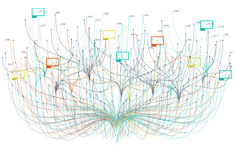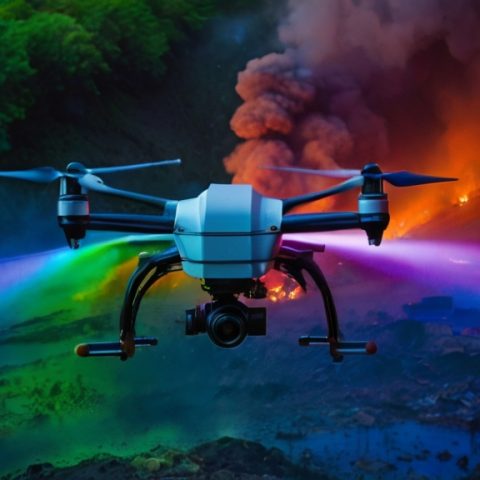Imagine you’re at the helm of a project that could redefine how we interact with the world around us. You have the technology, you have the team, and you have the vision. There’s just one catch: the overwhelming volume and complexity of LiDAR data standing between your current state and your goal.
LiDAR technology, a critical component in autonomous driving, urban planning, and environmental monitoring, relies heavily on precisely labelled data to train the machine learning models that interpret the world as humans do.
In today’s blog post, I’ll walk you through setting up an efficient LiDAR data labelling workflow grounded in real-world applications and insights. We’ll tackle the common pitfalls and provide you with the tools and knowledge to succeed. So, let’s dive in together, ensuring your projects are feasible and impactful.
Understanding LiDAR Data
Before we discuss labelling specifics, it’s crucial to understand LiDAR data and its importance in today’s tech-driven landscape. LiDAR, which stands for Light Detection and Ranging, uses laser light to measure distances. This technology generates precise three-dimensional information about objects’ shapes and surfaces, making it invaluable for autonomous vehicles, 3D mapping, and even archaeology.
But here’s the thing—LiDAR data is not just a stream of numbers; it’s a complex puzzle of spatial information that needs careful interpretation. Each point captured by a LiDAR sensor represents a tiny piece of a much larger picture.
When you and I look at a landscape, our brains automatically process visual data to recognize objects and boundaries. However, this data needs to be meticulously labelled so that machines can teach them how to ‘see’ and make sense of their surroundings.
Challenges in LiDAR Data Labeling
As you can imagine, the process could be more straightforward. One major challenge is the sheer volume of data; a single LiDAR sensor can generate millions of data points per second. Labelling this data requires not just time but a deep understanding of what you’re looking at. How do you label a data point as part of a pedestrian, a car, or a tree? How do you ensure accuracy when the consequences of error can be critical?
Moreover, the variability of environmental conditions adds another layer of complexity. Different lighting and weather conditions can drastically change how LiDAR data looks. Labelling data from a sunny day differs from labelling data gathered during a rainy night. The quality and reliability of your machine learning model depend heavily on how well these nuances are captured in the labelling process.
Setting Up Your LiDAR Data Labeling Workflow
Now, let’s take a look at how to set up an effective workflow to manage these challenges. First, you’ll need the right tools. It is paramount to choose software that can handle large datasets and provide intuitive labelling tools. Look for platforms that offer features like automated tagging or AI-assisted labelling—these can significantly speed up your workflow.
- Data Preparation: Begin by cleansing your data. This means removing irrelevant or corrupted data points that could skew your model’s learning.
- Tool Selection: Choose a labelling tool that fits your project’s needs. Whether it’s open-source software like LabelMe or commercial platforms from our partners including DataLoop or Basic AI, ensure it can handle LiDAR data specifically.
- Team Training: Train your team not just to label data but to understand its context. They should be able to recognize subtle differences in data points, which can be crucial for accuracy.
- Quality Checks: Implement a robust system for quality control. Regular audits and sample checks help maintain high standards.
- Feedback Loop: Set up a feedback loop where initial results from your labelled data are tested and reviewed. Use the insights gained to refine your labelling process continuously.
Best Practices for LiDAR Data Labeling
To further ensure your workflow is as effective as possible, here are some best practices:
- Consistency is Key: Maintain consistent labelling standards across your team to avoid discrepancies in data interpretation.
- Leverage Technology: Use machine learning algorithms to pre-label parts of your data automatically. This can reduce the workload and improve the consistency of labels.
- Regular Training: Keep your team updated with the latest labelling techniques and tools. Regular training sessions can help them stay at the top of their game.
Empowering Your Projects with Effective LiDAR Data Labeling
You’re now more than equipped to set up a robust LiDAR data labelling workflow. Remember, the goal is not just to label data but to do so in a way that maximizes its utility and relevance for your specific applications. Adequate labelling is a blend of technology, methodology, and human expertise.
Don’t forget that every project is a learning opportunity. Your challenges will provide valuable insights that can refine your approach and enhance your outcomes. Embrace these challenges as part of the process. Be patient and persistent, and most importantly, maintain a rigorous standard for quality and accuracy. The success of your AI and ML models depends on it.
Continuous learning and adaptation are crucial to staying ahead in LiDAR technology and data labelling. Keep exploring new tools and techniques. Engage with the community through forums and conferences. Learn from the successes and setbacks of others in your field. This dynamic approach will ensure that your workflow remains cutting-edge and effective.
Finally, I encourage you to share your experiences and insights with others by sharing your comments and thoughts below. Collaboration and knowledge exchange are vital for more sophisticated and intuitive AI applications. Your contributions can help pave the way for innovations we have yet to imagine. And if you’re still thirsty for more articles related to data labelling, be sure to check out how to set up an effective video data labeling workflow.
Furthermore, setting up an effective LiDAR data labelling workflow is the key to unlocking the potential of LiDAR technology in your projects. Whether you’re developing autonomous vehicles, designing smart cities, or protecting natural landscapes, the quality of your data labelling efforts will significantly influence your success. So, take the steps we’ve discussed and transform complex LiDAR data into actionable insights today!
I hope this discussion has been helpful and has equipped you with the knowledge and tools to enhance your projects. Feel free to contact us if you have any questions or need further clarification on any points we mentioned today. Should you need point cloud annotation help for your next LiDAR project, be sure to check out SmartOne’s LiDAR annotation services, where we share with you how we pride ourselves on data labelling services in terms of quality, accuracy, flexibility, and price.
Here’s to your success in making the most of LiDAR data!










